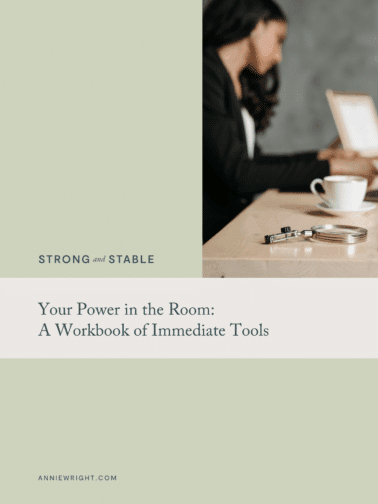Two weeks ago, I shared the first step and tool you can employ to create a robust psychological foundation for yourself: cultivating a “Healthy Mind Platter” based on the work of Dr. Dan Siegel.
I hope that the prompts and examples I shared encouraged you to come up with some realistic, practical, and implementable strategies you can use to support your own mental health on a more regular basis.
Now, today, in the second part of this two-part essay, we’ll be exploring the second tool to support your emotional regulation abilities more: designing your own personal toolboxes for those times when you find yourself dysregulated in hyperarousal or hypoarousal.
After we’ve developed our “Healthy Mind Platters”, we take any concrete and practical steps to ensure we’re meeting those seven needs on a roughly regular basis. The second part of the work is cultivating and calling upon a wide toolbox of tools. This will help us widen our window of tolerance and increase our own self-regulation abilities for when we are dysregulated. When we find ourselves outside of the optimal arousal zone and in the hyper- or hypoarousal states.
The Second Step: Develop Your Self-Regulation Toolbox.
Having a rich, robust, and personalized toolbox is one way we practice resiliency and rebound. Especially when we find ourselves in hyper- or hypo-arousal zones.
We do this work by developing practices, habits, tools, and internalized and externalized resources that help soothe, regulate, redirect, and ground ourselves.
I focus heavily in my work with my therapy clients to help them cultivate a wide, diverse, rich, and effective multi-sensory toolbox of resources. They can use this to practice resiliency when dysregulated and outside of their Windows of Tolerance.
Detailing the breadth and specifics of all of these tools is beyond the scope of this essay. I wrote an article way back in 2016 that has 101 self-care suggestions for a bad day. It’s a great piece to take inspiration from as you build your own toolbox.
Whatever tools resonate with you, I’ll share that when working with my clients, I aim to make sure these tools are both internal and external in nature (meaning tools you can both do without external props or relational resources, and tools and options that include those things), multisensory (meaning that they engage all five senses), and invisible and visible (meaning tools you can use at home when no one’s watching, and tools you can use in the conference room when your boss is presenting and looking at you).
I also have my therapy clients design different toolboxes for when they might be dysregulated and in hyperarousal vs. hypoarousal zones.
Let’s explore what this can look like.
Actual Examples of “Self-regulation Toolboxes.”
Here’s an example of a multi-sensory self-regulation toolbox I developed with someone. You can do this at home if you’re hyperaroused and going into panic, anxiety, anger, and irritation:
Multi-Sensory Hyperarousal Toolbox:
- Practicing box breathing.
- Listening to Native American flute music.
- Putting lavender oil on wrists and temples.
- Holding an ice cube in one hand and letting it melt.
- Looking at a photo of someone they love in a happier, more regulated time.
And here are some tools for someone who is prone to hypoarousal.
What's Running Your Life?
The invisible patterns you can’t outwork…
Your LinkedIn profile tells one story. Your 3 AM thoughts tell another. If vacation makes you anxious, if praise feels hollow, if you’re planning your next move before finishing the current one—you’re not alone. And you’re *not* broken.
This quiz reveals the invisible patterns from childhood that keep you running. Why enough is never enough. Why success doesn’t equal satisfaction. Why rest feels like risk.
Five minutes to understand what’s really underneath that exhausting, constant drive.
Multi-Sensory Hypoarousal Toolbox:
- Take a HIIT ride on the Peloton (or any vigorous exercise).
- Listening to Rage Against the Machine (or any high-energy stimulating music).
- Smelling cinnamon oil or rosemary oil (something sharp and bracing).
- Chewing crunchy hard food like popcorn.
- Watching an action movie or action-packed TV series.
Again, all of these tools in the toolbox are designed to “get the brain back online” (in other words, regulated and the prefrontal cortex accessed again) and get back into the Window of Tolerance.
They are tools that strengthen our ability for self-regulation resiliency when we notice we’re outside of the optimal arousal zone.
Building Your Own Multisensory Toolboxes.
Let’s take a moment and have you build your own multi-sensory self-regulation toolbox via these prompts:
- What’s a tool you could use that engages your physical body to dispel excess energy when you’re in hyperarousal?
- What’s a tool you could use that engages your physical body to increase energy and blood flow when you’re in hyporarousal?
- What’s a scent that calms you down?
- What’s a scent that activates you and energizes you?
- What’s one food you can eat that feels soothing and calming? (hint: think creamy, cold, sweet, smooth)
- What’s one food you can eat that feels a little more engaging? (hint: think spicey, crunchy, sharp, bitter)
- What’s a kind of music/exact song that just calms you down when you play it?
- What’s a kind of music/exact song that activates you when you listen to it?
- What’s a texture and/or thing you could touch or surround your body with that feels calming and soothing? (hint: think weighted blankets, soothing lotion, sunshine, hot tubs)
- What’s a texture and/or thing you could touch or surround your body with that feels energizing and activating? (hint: think cold plunges, being in the rain, laying in the grass.)
When these tools may not be enough.
Now, I do want to say that if all of what I’ve in today’s essay shared sounds and feels like magical thinking – like you couldn’t even imagine remotely being able to do this, do this consistently, let alone do it well – I want to be frank that there may be variables at play that require you to get additional support in order to regulate your own nervous system and help get you into the Window of Tolerance (or experience it for the first time).
The biggest variable I see that prevents this is when we come from relational trauma histories and have unprocessed trauma in our pasts that is still significantly distressing our nervous systems.
Another variable might be a very unhappy, strained, and brittle marriage that triggers you and your attachment wounds daily.
And yet another variable might be having a child in your home with trauma of their own, undiagnosed neurodivergence, or other variables that create additional strain and stress for you.
In these cases, seeking out a trained mental health professional – whether this is a child therapist, a trauma therapist for you, or a terrific couples counselor to help mend your partnership – may be a proverbial “power tool” you want to employ to support your emotional regulation and well-being at home.
And now I’d love to hear from you in the comments below:
What tools went into your hyper- and hypoarousal toolboxes? What are the tools, tactics, and tricks you employ to help get back into the Window of Tolerance?
So, if you feel so inclined, please feel free to leave a comment and share your wisdom and experiences. You never know who you’ll help when you write.
Here’s to healing relational trauma and creating thriving lives on solid foundations.
Warmly,
Annie





